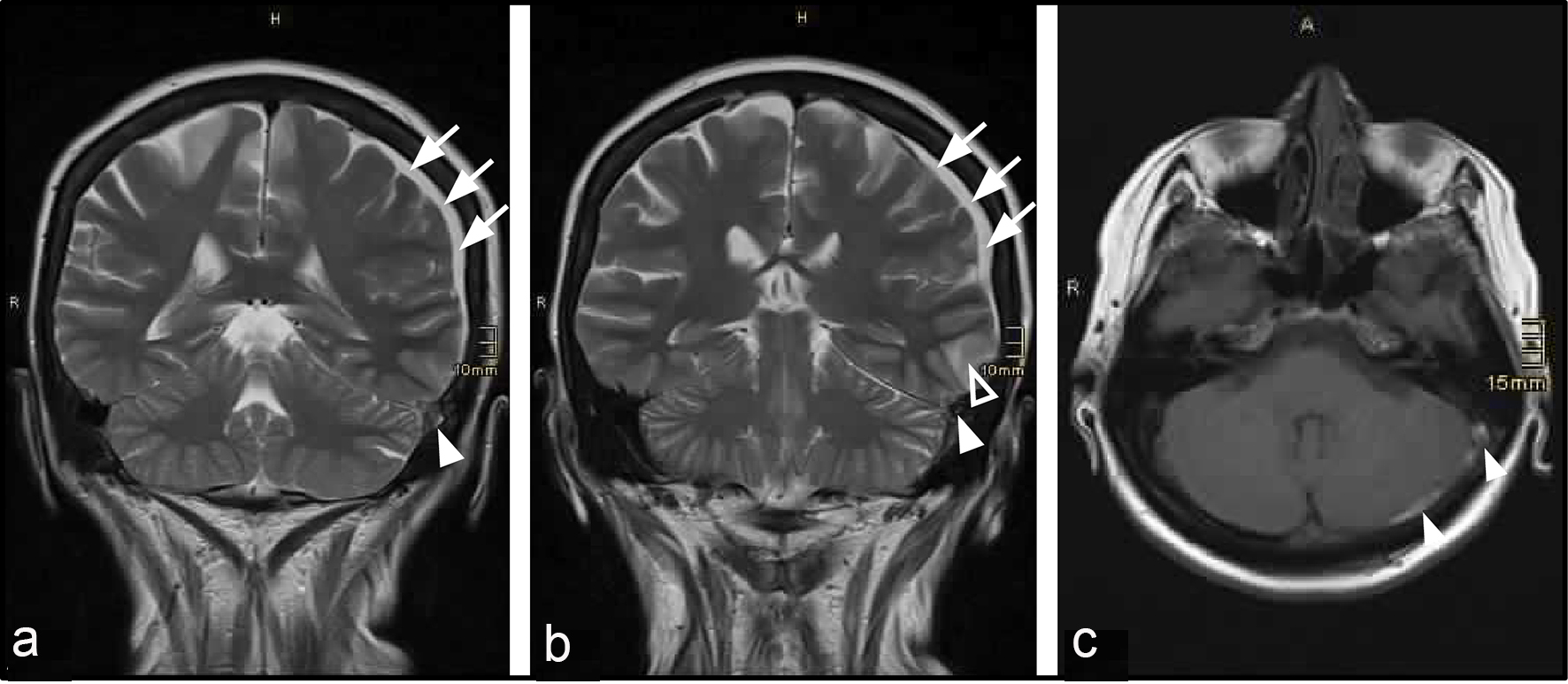
Figure 1. Detection of CVST by cranial MRI. (a, b) T2-weighed MRI, coronal section. (c) Gadolinium-enhanced T1-weighed image, axial section. Filled arrowheads show thrombus in the left transverse and sigmoid sinus. Blank arrowhead shows left temporal intracerebral hemorrhage. Arrows show left parietal subdural hematoma.
